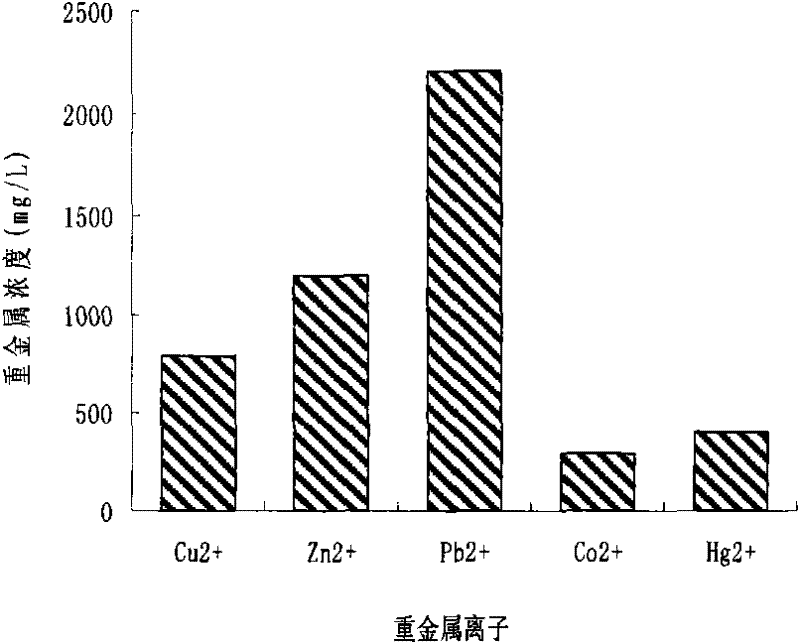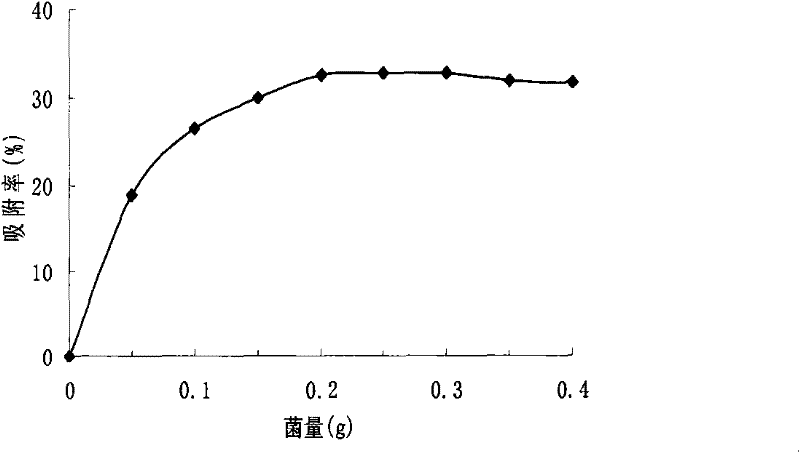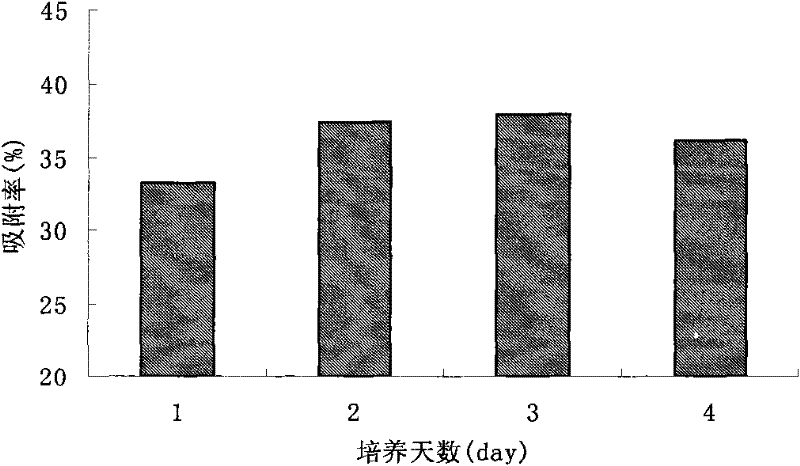Acinetobacter and application thereof in biological treatment of heavy metal ions
A technology of heavy metal ions, Acinetobacter baumannii, applied in biological water/sewage treatment, microorganism-based methods, microorganisms, etc., can solve the problem that heavy metal adsorption research has not yet been reported.
- Summary
- Abstract
- Description
- Claims
- Application Information
AI Technical Summary
Problems solved by technology
Method used
Image
Examples
Embodiment 1
[0027]Embodiment one: the cultivation and identification of Acinetobacter baumannii R9 (Acinetobacter baumannii R9) CGMCC No.3947
[0028] The present invention specifically provides a strain isolated and screened from the arid desert environment in Xinjiang, numbered R9, which has tolerance to various heavy metal ions, and the maximum tolerance to lead ions is 2200 mg / L. Currently tentatively named Acinetobacter baumannii R9. The growth and reproduction of the bacterial strains provided by the invention have no special requirements on nutrients, and can grow on common bacterial culture medium. Conventional microbial preservation techniques and methods such as slant passage method, freeze-drying method, and glycerol tubes can be used for preservation and viability testing. At present, the strain has been deposited in the International Depository of Microorganisms under the Budapest Treaty: the General Microorganism Center of China Committee for the Collection of Microorganism...
Embodiment 2
[0032] Embodiment 2: Tolerance of Acinetobacter baumannii R9 (Acinetobacter baumannii R9) CGMCC No.3947 to heavy metal ions
[0033] The isolated and purified strains were inoculated in Cu-containing 2+ Concentration 200mg / L-1000mg / L (every 100mg / L is a gradient), Zn 2+ Concentration 100mg / L-1200mg / L (every 200mg / L is a gradient), Pb 2+ Concentration 200mg / L-2200mg / L (every 200mg / L is a gradient), Hg 2+ Concentration 20mg / L-500mg / L (every 20mg / L is a gradient), Co 2+ On solid MM medium with a concentration of 50mg / L-400mg / L (every 50mg / L is a gradient), culture at a constant temperature of 30°C for 2 days, observe the growth of the strain, and detect the growth of the strain at different concentrations of various metal ions. For the test results of the highest tolerance of the strains to each metal ion, see the attached figure 1 shown.
[0034] From the detection results, the bacterial strains used in the present invention all have certain tolerance characteristics to fiv...
Embodiment 3
[0035] Embodiment three: thalline dosage is to thalline adsorption Pb 2+ Effect of effect
[0036] Pick a loop of fresh bacteria and inoculate it into a 500mL Erlenmeyer flask containing 50mL of liquid MM medium, culture at a constant temperature of 180r / min at 30°C for 1 day, collect the bacteria by centrifugation (4000r / min, 20min), and use After repeated washing with deionized water three times, the bacterial cells were collected for future use.
[0037] Accurately measure the concentration of 200mg / L Pb 2+ Aqueous solution 20mL, respectively weighed 0.05, 0.1, 0.15, 0.2, 0.25, 0.3, 0.35, 0.4g wet bacteria were added to the above Pb 2+ Disperse and mix in the aqueous solution, shake and absorb at room temperature for 30min, centrifuge at 13000r / min for 5min, take the supernatant to measure Pb 2+ ion concentration, and calculate its adsorption rate, the results are shown in the attached figure 2 shown.
[0038] The measurement results showed that with the increase of t...
PUM
 Login to View More
Login to View More Abstract
Description
Claims
Application Information
 Login to View More
Login to View More - R&D
- Intellectual Property
- Life Sciences
- Materials
- Tech Scout
- Unparalleled Data Quality
- Higher Quality Content
- 60% Fewer Hallucinations
Browse by: Latest US Patents, China's latest patents, Technical Efficacy Thesaurus, Application Domain, Technology Topic, Popular Technical Reports.
© 2025 PatSnap. All rights reserved.Legal|Privacy policy|Modern Slavery Act Transparency Statement|Sitemap|About US| Contact US: help@patsnap.com



